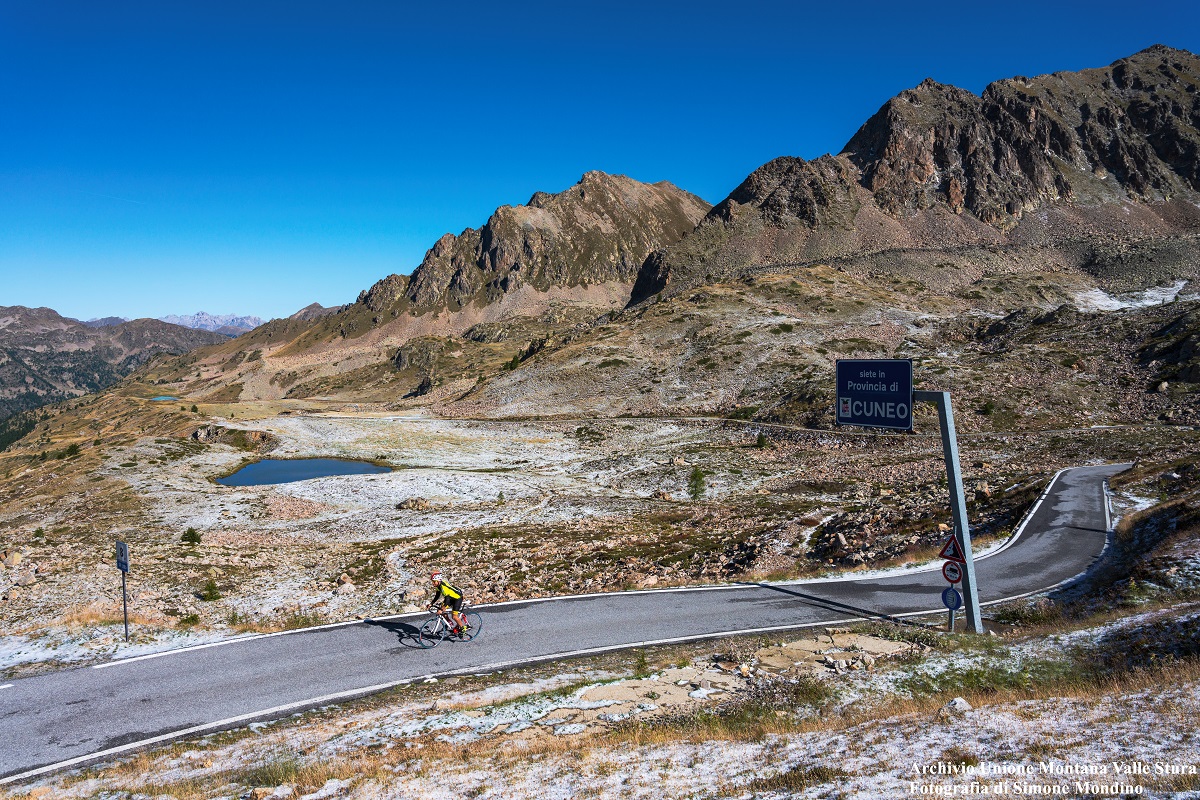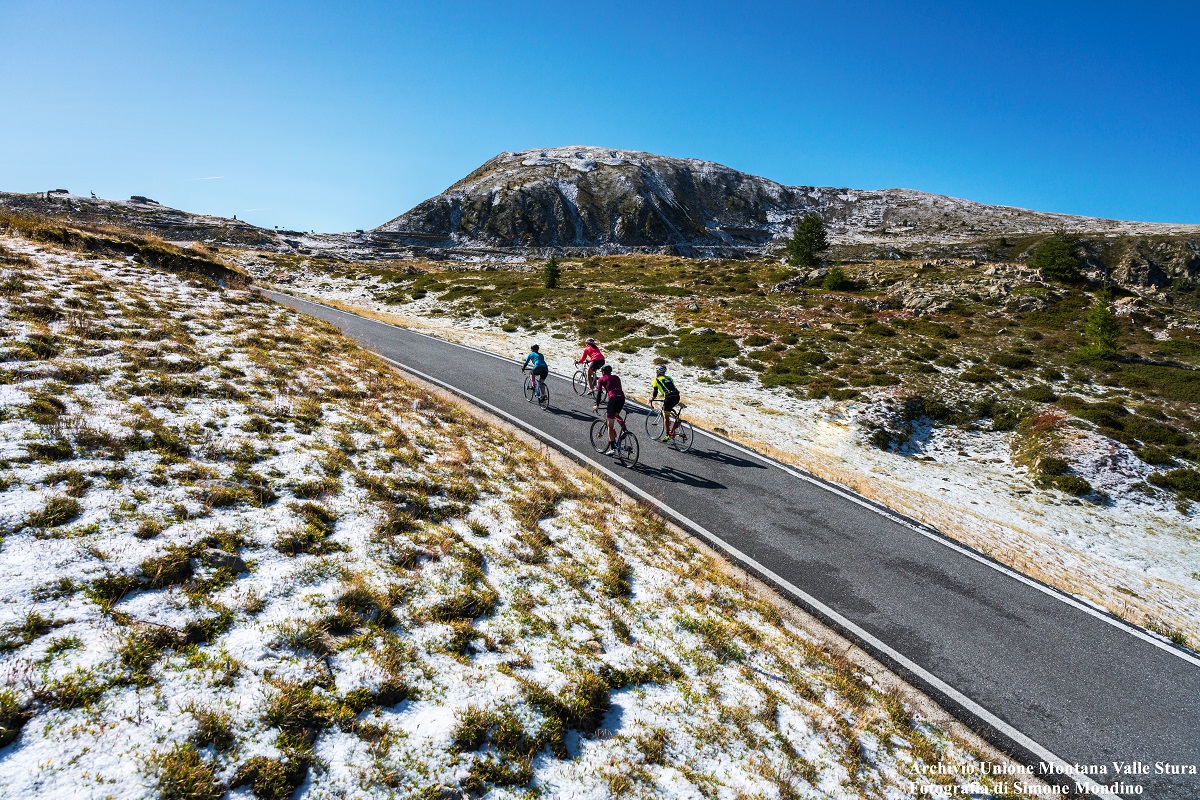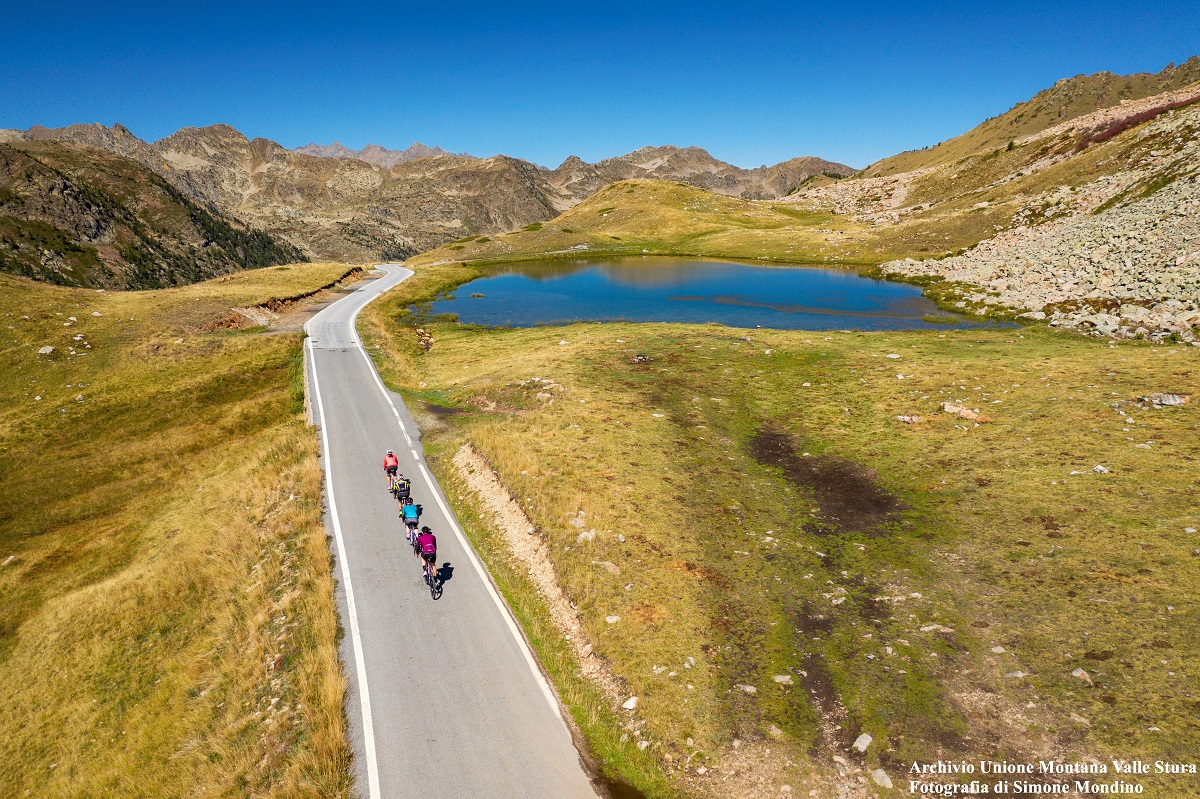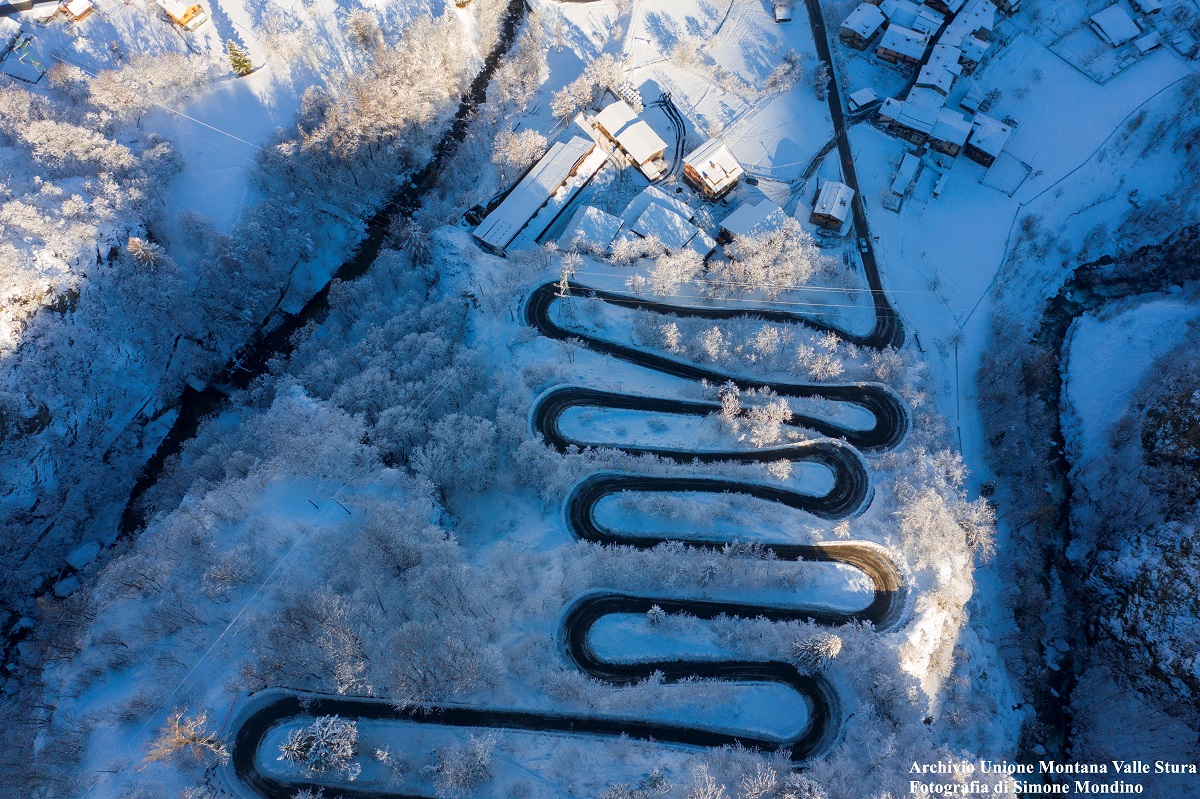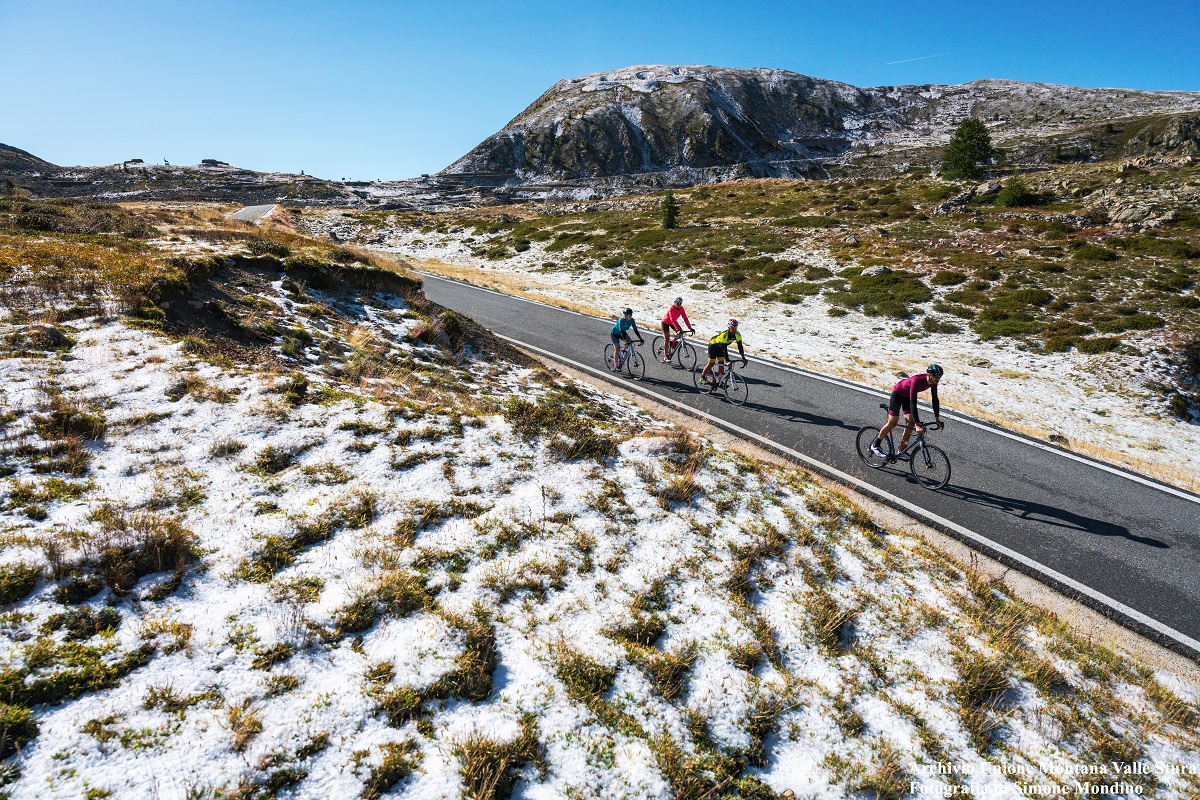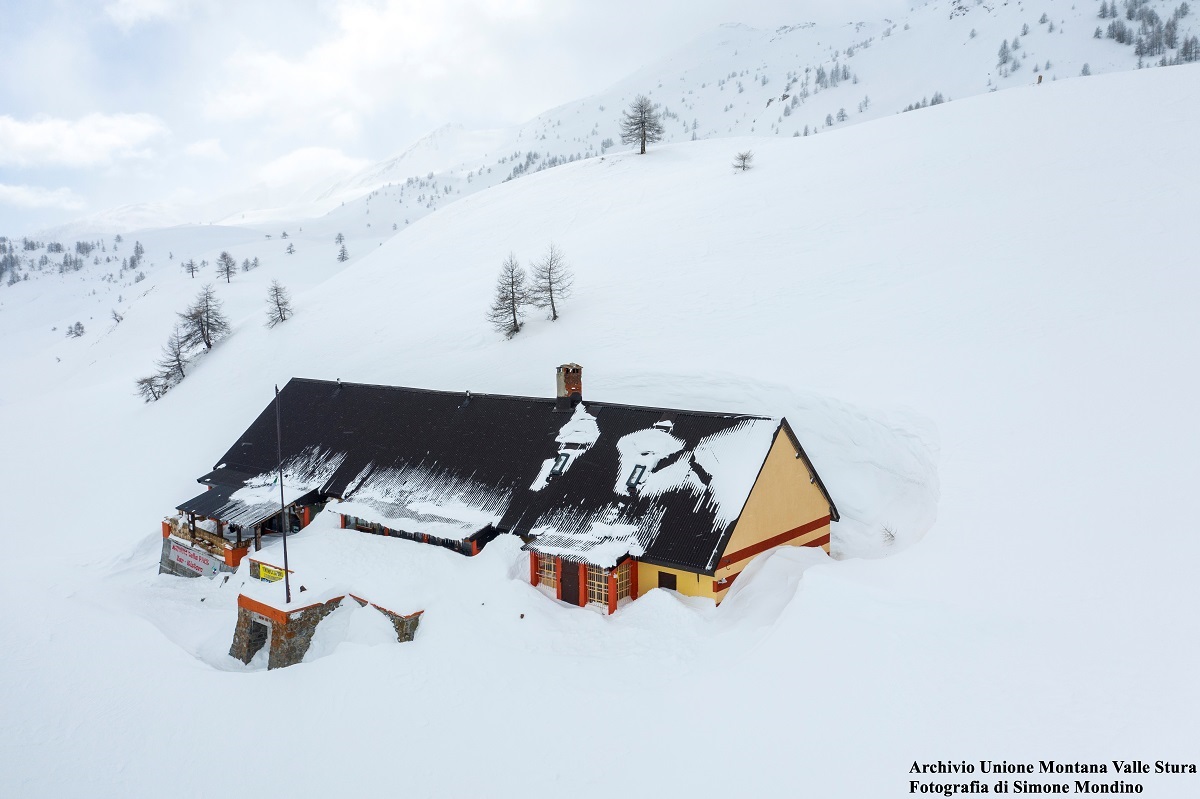Three international crossings
The Stura Valley winds through an area that includes some of the most renowned hills for road cycling lovers, made famous by the exploits of the great champions of the “Giro d’Italia” and “Tour de France” such as the Colle della Maddalena, the Lombarda and the Fauniera.
COLLE DELLA MADDALENA
The Col de la Maddalena, called col del Larche by the French, connects Cuneo and the Stura Valley with Barcelonnette in the Ubaye Valley. This is one of the most important passes both historically and in terms of roads. The passage was already used in prehistoric times by shepherds of Celto-Ligurian lineage and in Roman times when consul Fulvio Fiacco and Pompey Magnus transited.
In the early Middle Ages the hill recorded the presence of columns of Lombards and Saxons and later Saracens.
By the middle of the 13th century the passage was much exploited by the Provençal armies of Charles I and Charles of Anjou, following the annexation of the upper Stura valley to the County of Provence; following the move of the papal see to Avignon to cross the hill were also papal couriers, who with the pilgrims joined the caravans of mules laden with salt and other goods.
In 1630, the year of the bubonic plague, the transit of men and goods over the pass came to a halt, and the pass was subjected to strict sanitary controls; only once the dangers of contagion ceased did the transits of trade caravans resume.
In the 18th century, during the wars of succession of the European ruling houses, there were continuous crossings of Piedmontese, French, Austrian, and Spanish troops, and after the French Revolution Napoleon’s armies also used this pass to invade Piedmont.
In 1944, the Colle dellla Maddalena was the scene of the Battle of the Stura Valley, fought between partisan bands and German armored forces. In the liberation days between April 22 and 25, 1945, French troops managed to regain control of the pass, bringing it back under French rule. On April 23, the French attacked and retook the village of Larche, but on the 24th French artillery was sent to support Operation Pingouin attacking the Lombard Hill, and fighting ceased.
Since the postwar period, the Colle della Maddalena has been confirmed as an important gateway for automobile, tourist and heavy traffic between southwestern Piedmont and Provence, as well as a scenic thoroughfare for splendid bicycle and motorcycle routes.
COLLE DELLA LOMBARDA
The Lombard Pass is an alpine pass located at an altitude of 2,351 m (7,760 ft) that lies on the border between Italy and France. On the Italian side, the Sanctuary of Sant’Anna is encountered along the ascent, while on the French side is the Isola 2000 ski resort.
Until after the war, the road ended at about the height of present-day Isola 2000, not allowing it to reach France; this was because until 1947 the upper Ciastiglione valley, including the area of the present ski facilities, belonged to the municipality of Vinadio. After the area passed to France, the French built the rest of the road, thus opening up road communication between Italy and France across the pass.
COLLE FAUNIERA
The Fauniera Pass (2,481 m a.s.l.) is a pass in the Cottian Alps that connects the Arma Valley, a side valley of the Stura di Demonte Valley, with the Grana Valley, the latter famous for the presence of the Sanctuary of San Magno.
Fauniera is in the hearts of sportsmen and women, especially those who are passionate about cycling, not only from Cuneo but from all over the world. In fact, it has become one of the most sought-after mountain destinations for climbers on two wheels, classifiable as a long and demanding alpine climb, with the significant elevation gain and high altitude reached. The Fauniera descent is considered one of the most technical in the Alps.
Today the Fauniera Pass has become the Summit of the “La Fausto Coppi” gran fondo, which has had more than 2,500 cyclists from 37 nations climb it in more than 10 years.


